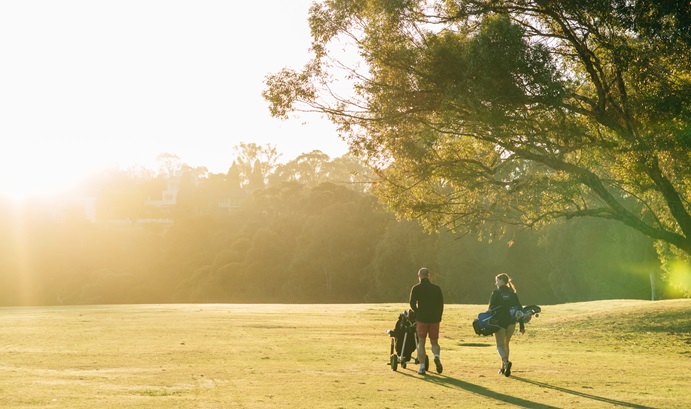Study reveals the best and worst colors to wear in the summer heat—ranked from 1 to 9 – Australian Golf Digest

- by Admin
- July 9, 2024

Here’s the corrected version with spelling and grammar errors fixed:
The golf season has entered its dog-days-of-summer portion of the schedule, which means heat management becomes an essential part of playing good golf.
No, that’s not an exaggeration: If you’re overheated and dehydrated, you sweat more, which means your muscles are more prone to cramping, stiffness, and injury. Your body gets weaker; your brain does, too. You can’t focus as well, and you can start feeling anxious for no reason.
“Your body doesn’t understand what’s happening, so it goes into survival mode,” explains Hans Larsson, Ludvig Aberg’s longtime swing coach.
Outside of snacking and drinking lots of fluids, the clothes you wear play a big role. And, specifically, the color of that clothing.
I was reminded of this last week, when I came across this 2019 study for the first time on social media.
Toshiaki Ichinose is executive senior research scientist at the National Institute for Environmental Studies in Tsukuba, Japan. He and his team of researchers set about studying the link between clothing color and heat with an experiment: The team placed nine different-colored polo shirts in the sun and measured the surface temperature with a special camera, which revealed how much radiant energy was absorbed by each color.
The coolest shirts finished around 60 degrees Fahrenheit; the hottest, a whopping 113 degrees. The results can vary by material type and design (as in, one company’s blue shirt may stay cooler than another’s), but either way, interesting.
Here’s how they all finished, from coolest-to-hottest.
1. White
If you remember from high school science class, white is the color that absorbs the least light of all colors, and therefore a lot less heat.

Andrew Redington
2. Yellow
Solid showing for yellow, which finished alone in second.

(Photo by Mike Lawrie/Getty Images)
3. Gray
Specifically light gray rounded up the top three. Bit of an upset that this finished so high.
 4. Red
4. Red
Tiger’s signature color with a slightly better-than-expected showing.

Gerry Melendez
5. Purple
Feels like an upset for purple to have finished this high up. Still, sadly, the first color to miss the cut.

Ezra Shaw
6. Blue
Perhaps a different shade would’ve pushed it navy blue higher up the ranks.

David Cannon
7. Green
One of the most interesting findings this analysis turned up is that green absorbed even more infrared light than black, making it one of the hottest materials to wear.

Icon Sportswire
8. Dark Green
Maybe save the Masters polo for Spring or Fall, rather than Summer.

Charlotte Observer
9. Black
Black absorbed 86 percent of infrared, and the most heat. In five minutes it finished 60 degrees hotter than white—but damn if it doesn’t look cool.

Dylan Buell
This article was originally published on golfdigest.com
The Latest News
-
January 2, 2025Tiger Woods admits ‘most of my events, I didn’t really have it,’ reveals the one where he did – Australian Golf Digest
-
January 2, 2025Akshay Bhatia on Phil Mickelson’s ‘mind-blowing’ Masters notebook, hitting shots in front of Tiger Woods and his breakout season – Australian Golf Digest
-
January 2, 2025Tiger Woods, other tour pros offer tributes after the passing of popular golf writer Steve DiMeglio – Australian Golf Digest
-
January 2, 2025Callaway Elyte hybrids: What you need to know – Australian Golf Digest
-
January 2, 2025Where to watch Australia vs. India 5th Test: Free live stream, free-to-air channel, start time for cricket match | Sporting News Australia





